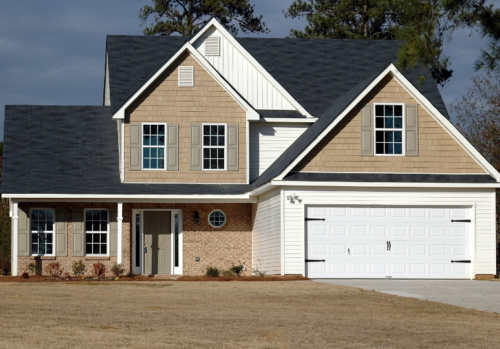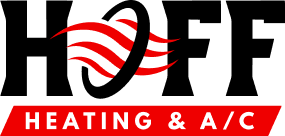6 Ways To Assess Your New Home’s Heating and Cooling Systems

When you purchase a home, there’s always a little uncertainty about what you’re getting, especially if it’s not a new construction. At the top of that list of things that could go wrong are typically the roof and the heating and cooling system. The roof is normally included in the pre-purchase inspection, but the HVAC system may not get that much attention. Given that, consider these six ways to assess the condition of your new home’s heating and cooling system.
1. Review Your System’s Service Life
When it comes to evaluating your new home’s HVAC system, you can get a good sense of where it’s at by assessing its current age. The average air conditioner will serve your home for about 10 to 15 years while a furnace may last 15 to 20 years, both with proper maintenance.
If you don’t have the paperwork from when your system’s components were installed, you can easily find it on the unit itself. The easiest one to find is the air conditioner. There should be a nameplate on the unit’s housing, which will include the date that it was manufactured.
The furnace can be a bit more tricky because you’ll be looking for the unit’s serial number. The first place to look is on the back of the access panel where you should find a product label. If you don’t see it there, or if it’s faded to where you can’t read it, then turn the system’s power off at the breaker, and look at the circulating fan motor and blade. Older units were known to stamp the serial number here so that you can easily find it, even if the label is unrecognizable.
Once you have the serial number, look at the first four digits to determine when the unit was produced. The first two numbers will be somewhere between 01 and 52, which indicates the week of the year it was made. The third and fourth numbers tell you the year. So if the first four numbers were 2413, that means the unit was produced in June of 2013.
If you find that your system is more than 10 years old, start planning for when you’ll replace it. Planning your replacement based on the unit’s age can help save money from increasing utility costs plus age-related repairs. Besides that, it also gives you time to more carefully consider your options rather than rushing to replace a failed system because you need it now.
2. Inspect for Damage
While you’re looking for the age information on your system’s units, conduct a basic inspection for damage. At your furnace, simply look for rust on the unit’s housing, excessive moisture on the ground around the unit, or metal particles in the drip pan. All of these indicate potential problems inside the unit, including a dangerous cracked heat exchanger.
For the air conditioner, start by looking for impact damage to the unit, such as dents and cracks in the housing. Also look for signs of corrosion on the exterior, such as rust. Finally, inspect the fins on the condensing coil through the housing grill, if you can see them. If there are a lot that are bent flat, then air won’t pass through the coil, reducing its efficiency.
Any sign of damage or corrosion indicates the need for further investigation by a professional HVAC technician. We’ll discuss how getting system maintenance when you first purchase your house can provide this plus give your system an efficiency boost from the start.
3. Evaluate Your Size Needs
It’s easy to assume that the system in your home is the proper size for your space. This is only a safe assumption when you’re buying a new construction. Otherwise, it’s easy for the system capacity to mismatch the home’s needs with many home renovations.
Anything from finishing a basement or attic to attaching a full addition changes the serviceable area of your system. If any of these have happened since the system was last replaced, it may no longer offer the appropriate capacity. Running a system that’s too small for the space leads to long heating and cooling cycles, which increases wear and tear.
The simple calculation to see if your system is the appropriate size relies on the square footage of your home. Gather the serviceable area, then multiply that by 45 to get the number of BTUs, or British thermal units, needed to properly condition your home. If you don’t know the size of our current system, consult an HVAC professional who can determine its size.
4. Examine the Thermostat
While examining the age and condition of your system, be sure to check your thermostat as well. As the brain of your system, an old thermostat or one that doesn’t match your needs will cost you more in heating and cooling your home. You can expect a digital thermostat to last about 10 to 15 years. At the end of its service life, the temperature sensors lose some of their sensitivity, leading to improper heating and cooling cycles.
If you’re not certain how old your thermostat is, check for a few things. First, get an independent thermometer to take the temperature at your thermostat and compare the readings. Next, check to make sure that the thermostat offers the proper programming capabilities to meet your needs. Different thermostats offer different programming features, anywhere from one set program that runs every day to every day having a different schedule.
5. Evaluate Utility and Repair History
If you can get your hands on it, evaluate the utility and repair history, ideally over the last two years. This will show you whether there’s been a significant increase in utility consumption or in the frequency of repairs. Both are indications that the system is nearing the end of its service life.
6. Have a Professional Maintenance Visit
Rather than attempting to evaluate your system on your own, you may want to have a professional maintenance visit instead. During these visits, a technician does a thorough evaluation of your system. This includes checking its age and evaluating any performance issues, including any system corrosion. When they get into your system, they’ll be able to determine how well the previous owners maintained the system. If it’s been neglected, you’ll expect more repairs and a shorter service life.
You’ll also get a boost to your system’s efficiency as you start using it. The technician will clean the system and tighten mounting hardware and electrical connections. All of this improves the airflow through the system and reduces its operational strain. This translates into less energy consumed to heat or cool your home.
When people around O’Fallon want to keep their homes comfortable, they turn to the award-winning team at Hoff Heating & AC. Our NATE-certified technicians provide air conditioning and heating repair, installation, and maintenance with indoor air quality options. Call to schedule your maintenance appointment for your new home today.

 Call Us Today
Call Us Today
